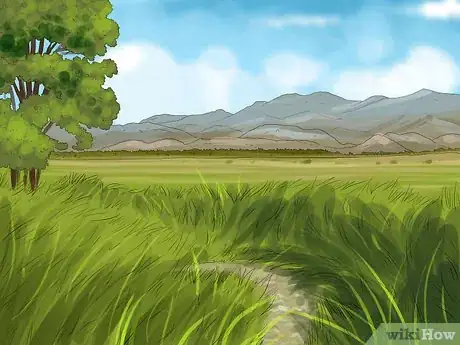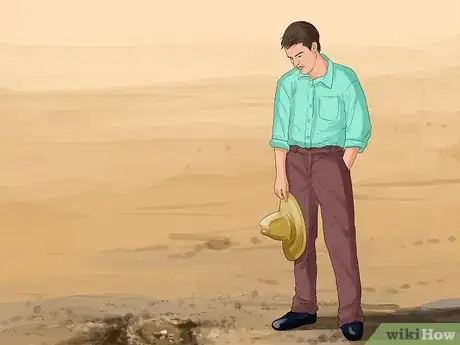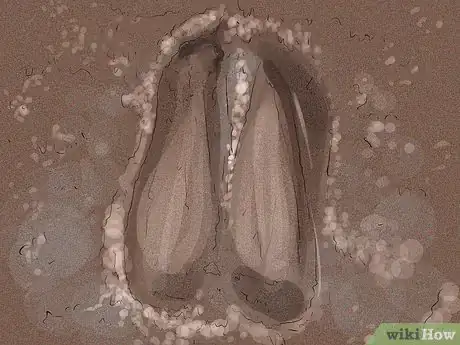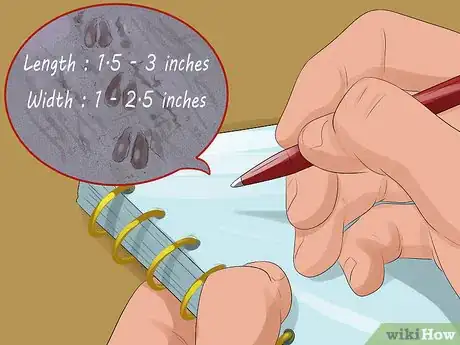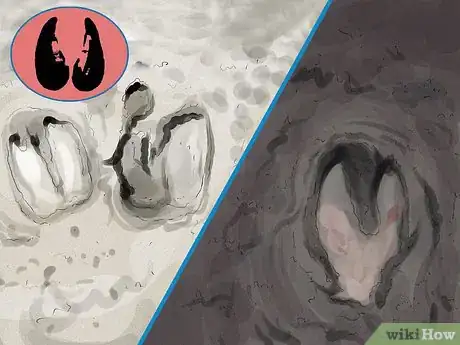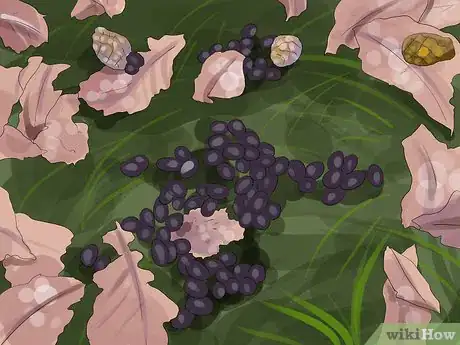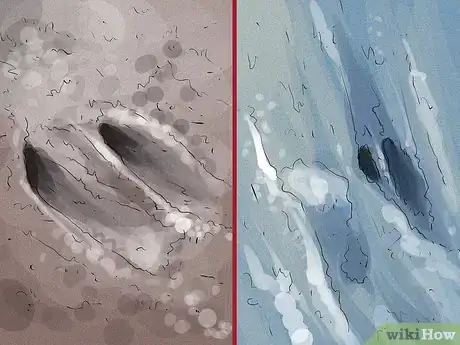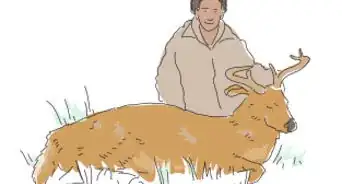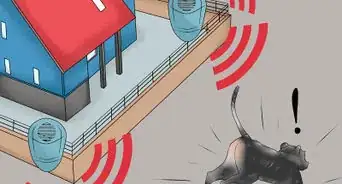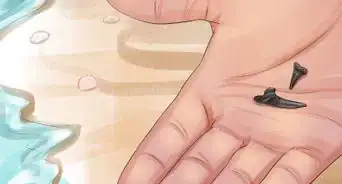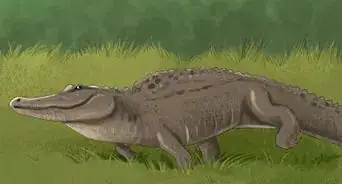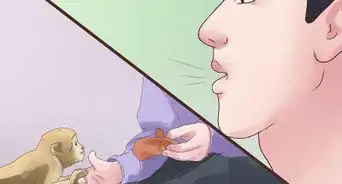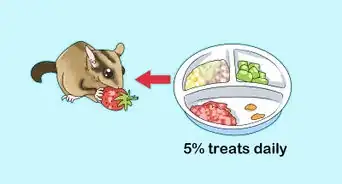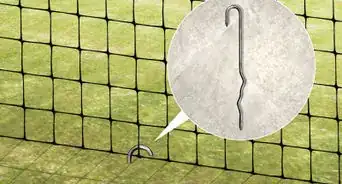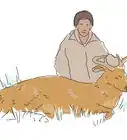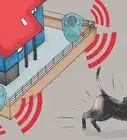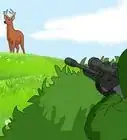This article was co-authored by wikiHow Staff. Our trained team of editors and researchers validate articles for accuracy and comprehensiveness. wikiHow's Content Management Team carefully monitors the work from our editorial staff to ensure that each article is backed by trusted research and meets our high quality standards.
There are 7 references cited in this article, which can be found at the bottom of the page.
This article has been viewed 40,438 times.
Learn more...
Whether you’re a hunter, a naturalist, or just a curious person, you might like to wander the forest in search of deer and other game. As one of the most common game animals in many regions, wilderness areas abound with deer tracks. Spotting deer tracks, though, could be harder than you think. Not only are there environmental factors that obscure deer tracks and make them hard to see, but there are a number of other animals whose tracks can easily be confused for deer tracks. However, with a little information and a little work, you’ll be able to spot deer tracks in no time.
Steps
Locating Deer Tracks
-
1Find a general location suitable for finding deer or other large game tracks. Depending on where you are, there probably are a variety of wilderness areas where you could try to spot deer tracks. Don’t be afraid to choose a few and to experiment and hike around the forest a bit before you start seriously looking. Consider:
- Private hunting reserves (make sure you have permission).
- National Parks and National Forests.
- State Parks and State Forests.
- Other public lands.
- A variety of habitats including plains, mountains, lowland forest, and more.
-
2Look for a place where deer might have a regular source of food. As with people, a regular food source will draw deer. In order to increase your chances of finding deer tracks, try to locate a place where deer will frequent for food. That way, you won’t just be counting on the luck of coming across tracks, but you’ll be narrowing down areas where you won’t have to look.
- Deer like to eat fruit. If there are fruit trees or any kind or berry bush, take a look.
- Deer rely on grasses and other plants for food, too. They particularly like flowering plants and non-wood plants. If you see a field of green grass and flowers, you might want to check there.
- Deer will also eat mushrooms.[1]
Advertisement -
3Identify a deer or game trail. One of the best ways to spot deer tracks is to first find a trail that deer frequently use. If you’re on public or private land in a rural area, you should be able to find one relatively easily. As a result of the abundance of deer and their frequent use of trails, game trails are one of the best locations to try to spot deer tracks.
- Depending on your location, deer trails may have high or low traffic.
- Deer trails often appear as human trails, but will be somewhat less worn and pronounced. They won’t often be straight, either.
- Deer trails will often still have some grass or plant growth on the ground that might be ripped up or disturbed.[2]
-
4Find bedding areas. Deer spend a large part of the day bedding down and sleeping. Deer beds will vary in the way they look. In a tall field of grass, the grass will be matted down in a circular pattern. In a thicket or a location with lots of leaf cover on the ground, the brush and leaves will be flattened or moved out of the way. If you can find favored bedding areas, you’ll have a much better chance of spotting deer tracks, too. To find bedding areas, look for:
- Night-time bedding areas. Deer like to rest near easy feeding spots. Look for alfalfa fields, abandoned fruit trees, and open areas with lots of green grass and non-woody flowering plants. From these areas, look for places with more cover, where the deer will feel hidden and protected. You might find a bedding spot.
- Day-time bedding areas are often in denser woods or thickets. In areas with hills or mountains, they might be higher up rather than in the valley.
- The location and circumstances of bedding areas will vary based on climate, topography, and environment.
Identifying Deer Tracks
-
1Look down at the ground. As you’re wandering around the forest, look at the ground and look for tracks. Spending a lot of time looking for tracks is really the only way to be sure you’ll find them. Don’t give up and persevere. You’ll find them soon enough.
- You will need to be in an area where animal's feet make an impression in the soil.
- Rocky or very sandy soil will be difficult to see tracks in.
- Loamy soil, moist clay soil, or packed, damp sandy soil is good material for observing tracks.
-
2Observe the shape of a track you’ve found. The most important part of spotting deer tracks is knowing the general shape of the deer's track and how to distinguish it from the tracks of other animals. Deer have a hoof that is split (cloven) which appears as two symmetrical haves in an oblong crescent shape. This isn’t the easiest thing in the world to discern because there are a lot of animals that roam the forest and there are a lot of things, including human footprints, leaves, and brush, that obscure the shape of deer tracks.
- When viewed upside down, deer tracks have a heart shape made up of the two hooves.
- The sides of deer tracks are convex (curved outward)
- The tips of hooves bend toward the inside of the track.[3]
-
3Take note of the size of the tracks. The size of deer tracks is one of the best ways to tell it apart from the tracks of other animals. If you know the size, you’ll be able to eliminate other potential animals like elk, moose, and boar. Elk, Moose, and other large hoofed animals have much larger tracks. Hogs, on the other hand, have similar tracks to deer, but the hooves are splayed more, and tend to have a rounder shape.
- The tracks of fawns or yearlings tend to be about 1 inch long.
- Fronts tracks of adult deer will be roughly 2 to 3 inches (5 to 8 cm) long, give or take. They’ll be about 1.5 to 2.5 inches wide.
- Rear tracks will be about 1.5 to 3 inches (3.8 to 7.6 cm) long. They’ll be about 1 to 2.5 inches (3 to 6 cm) wide.[4]
-
4Distinguish between similar animals. While you may be good at spotting tracks in the forest, it is sometimes hard to distinguish between deer and similar animals like antelope or goat. This is made even tougher by the fact that environmental conditions – mud, dirt, rocks, leaves, and more – often obscure animal tracks. Make sure to study different animal tracks carefully so you won’t confuse a deer track for another animal track.
- Pronghorn antelope have a similar upside-down heart shape appearance, but the sides are concave not convex.
- Mountain goat tracks are wider and much more rounded than deer tracks. The front tips are centered rather than being pointed toward the inside of the hooves.
- Bighorn sheep tracks are straight rather than being curved inward. They’re also wedge shaped and the tips are duller than deer tracks.
- Wild boar tracks are relatively wide and round compared to deer tracks. The tips are not pointy and are dull.[5]
-
5Spot other signs of deer movement. One way to help you spot deer tracks is to look for other signs of deer being nearby. While deer can move through some areas without leaving much of a trace other than tracks, certain environs provide much better evidence of recent deer activity. There are a number of things you can look for when looking for tracks:
- Plants that have been eaten by deer. Look for stalks close to the ground that have rough cuts bitten off. Rough cuts show because deer incisors are not as sharp as other animals like rabbits.
- Look for deer feces. Deer feces (also called scat) is identifiable by its oval shape. These oval pellets have a point on one end and a dimple on the other.
- Try to see if there is evidence of rutting. Rutting is when bucks use their antlers and rub them against the trunks of trees or large branches. You might also see leaves torn up and other evidence.[6] [7]
-
6Know what different tracks indicate about the deer’s behavior. Different tracks in different patterns indicate different things about a deer’s behavior. If you know how tracks correspond with certain behaviors, you’ll have a larger certainty in identifying your deer tracks. There are several things you should know:
- Tracks headed downhill or down a mountain indicate that a deer is going to feed.
- Tracks headed uphill mean that the deer is probably going to bed down.
- Tracks going in circles or back and forth probably indicate that the deer is feeding.[8]
Community Q&A
-
QuestionHow can you tell which way the deer is going when you look at its track?
 GabbyCommunity AnswerWhen you look at the track, it will have 2 toe-like shapes. Where they come to a point is the direction that the deer is going.
GabbyCommunity AnswerWhen you look at the track, it will have 2 toe-like shapes. Where they come to a point is the direction that the deer is going. -
QuestionWhy do baby deer have white spots on their backs?
 Community AnswerTo help with camouflage. There may be danger when the mother is away, and the coat of a baby deer resembles the light through the branches of a tree on the ground.
Community AnswerTo help with camouflage. There may be danger when the mother is away, and the coat of a baby deer resembles the light through the branches of a tree on the ground. -
QuestionWhat time in the evening is best to see deer?
 Community AnswerThe hour around sunset is usually the best time to see deer, i.e. 30 minutes before sunset - 30 minutes after sunset.
Community AnswerThe hour around sunset is usually the best time to see deer, i.e. 30 minutes before sunset - 30 minutes after sunset.
References
- ↑ http://www.nyantler-outdoors.com/what-do-deer-eat.html
- ↑ http://www.startribune.com/reading-deer-trails-helps-choosing-a-hunting-location/129677478/
- ↑ http://www.wildernesscollege.com/identify-deer-tracks.html
- ↑ http://www.naturetracking.com/deer-tracks/
- ↑ http://www.wildernesscollege.com/identify-deer-tracks.html
- ↑ http://www.bear-tracker.com/deer.html
- ↑ http://www.bear-tracker.com/deerruttingsigns.html
- ↑ Deer Talk: Your Guide to Finding, Calling, and Hunting Mule Deer and Whitetails, with Rifle, Bow or Camera. By Don Laubach and Mark Henckel
About This Article
The best way to find deer tacks is to start your search in place with lots of deer, such as a National Park or National Forest, State Park or State Forest, or a private hunting reserve, if you have permission. When you begin, look around for an area with lots of food sources for deer, like fruit, berries, grasses, flowers, or mushrooms. As you explore, pay attention to the ground and look for hoofprints that look like two symmetrical halves in an oblong crescent shape. When you find tracks, take note of the size in a field journal. Adult deer prints will be around 2-3 inches long, which will distinguish them from the prints of much larger hooved animals, like elk or moose. For more tips on deer tracking, like how to know what hoof prints can tell about a deer’s behavior, keep reading!



